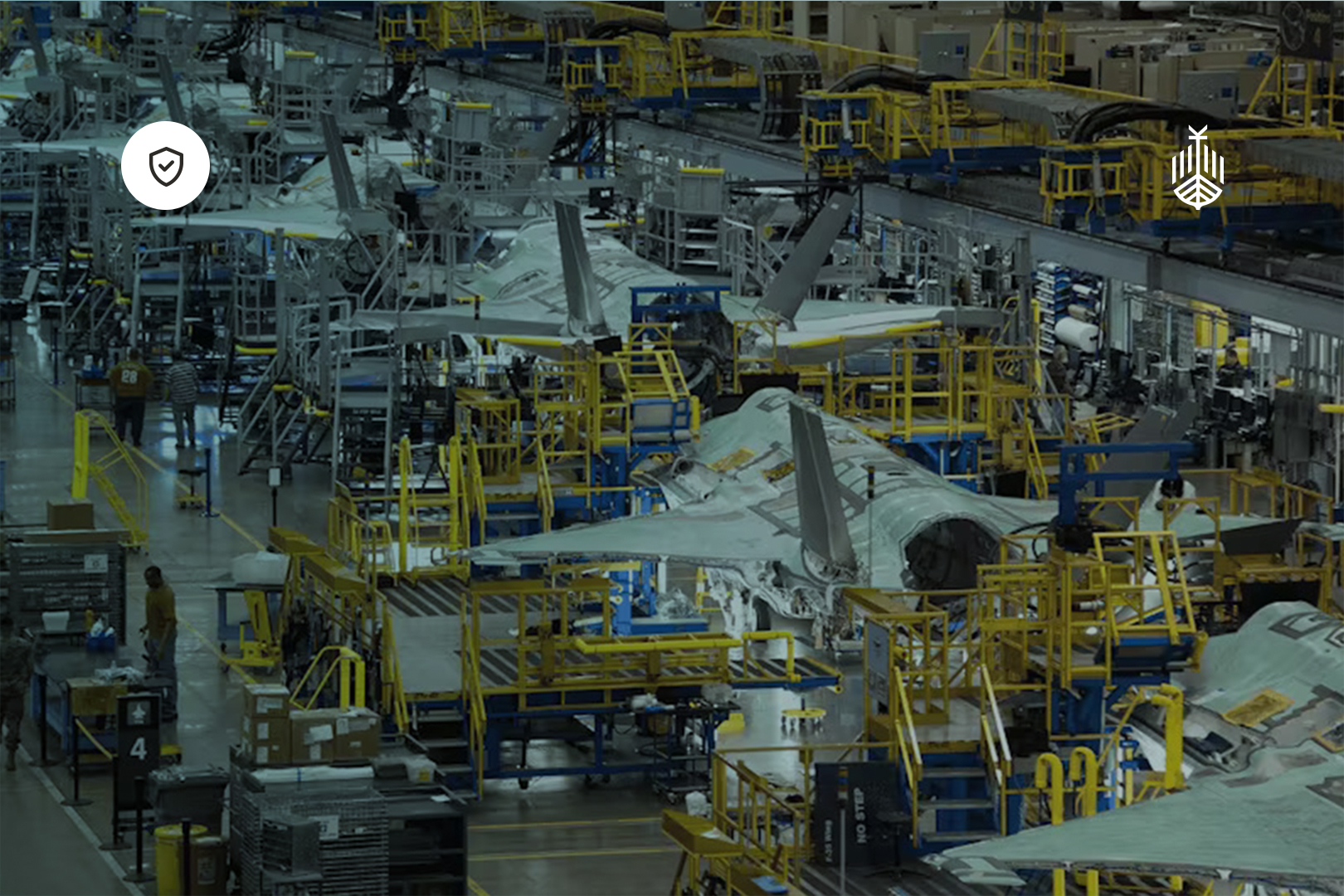Introduction
As we all watched air strikes and armoured columns rolling into Kyiv last February, the world was confronted with a stark realisation: despite all the technological advancements, the fundamental nature of warfare remains unchanged.
Russia, with its apparent superiority, aimed to swiftly capture the capital within three days. However, what unfolded next astonished the global community. Ukraine’s society rallied together, and untrained individuals armed with shoulder launch missile systems managed to halt the Russian military's advance on land and in the air.
With the invasion blunted, the focus shifted to containing Russia in the occupied areas and formulating plans to retake lost territory. The conflict saw the gradual introduction of Western military assets, initially defensive in nature, as a delicate balance was sought between supporting Ukraine and avoiding an escalation of tensions with Russia. However, this trickle soon turned into a torrent, with both sides employing cutting-edge weapons and technologies. Those of us based in Ukraine had ring side seats to the technological arms race as new advantages were swiftly countered, only to be replaced by the next innovation.
The principles of warfare didn’t change, maybe they never will, but the tools, strategies, and tactics on the battlefield changed fortnightly to keep pace.
The shift in battlefield dominance
The once indisputable dominance of heavy platforms like tanks, warships, and fighter planes faced formidable opposition with the advent of radar systems, defensive missiles, and advanced intelligence gathering capabilities.
At the onset of the conflict, Russia relied heavily on its tanks to establish superiority on the battlefield. Yet, Ukrainian forces effectively countered them using cheaper portable defensive systems such as the US Stinger and Javelin Anti-Tank Guided missiles. While initial concerns were raised about their performance, I believed most issues stemmed from a lack of training rather than technological shortcomings. Even with limited training, these missiles proved highly effective, inflicting significant losses on the Russian forces. With assistance from the US, Ukrainian intelligence successfully sank Russia's flagship Black Sea Fleet vessel, The Moskva, using the Neptune anti-ship cruise missile. Notably, the Moskva cost approximately $750 million, while the Neptune system only amounted to $40 million.
The increasing prominence of inexpensive, attributable systems posed a significant challenge, as defending against them required costly technologies.
(1) Enter the age of drones
Whilst sitting in our Operations Room at night, one could be forgiven for thinking they were in a scene from Bladerunner as Iranian Shahed 136 Loiter Munition Drones weaved through skyscrapers, only to be shot down by Ukrainian air defence teams.
Drones and satellite imagery emerged as critical tools for intelligence gathering, surveillance, reconnaissance, and targeted strikes. Both sides in the Ukraine conflict heavily relied on these technological assets to acquire real-time data on enemy positions. The abundance of information made it increasingly difficult for forces to manoeuvre undetected. Commercially available drones equipped with high-resolution cameras played a particularly vital role in locating and engaging enemy troops. The Turkish Bayraktar TB2 and US Switchblade UAVs significantly contributed to Ukrainian operational successes. This reliance on unmanned aerial systems highlighted the need for improved camouflage measures to effectively deceive drones and satellites.
With the proliferation and success of UAVs, a race for countermeasures and electronic warfare (EW) technology also ensued. A UAV or weapon system that initially proved highly effective would become nearly obsolete within a month due to Russia's jamming capabilities.
(2) The rise of artificial intelligence
The advancements of drones and satellites means there is more accessible information, faster, than on any battlefield in history. The need to rapidly analyse this vast amount of information, while accelerating kill chains in an enhanced EW environment, prompted a significant shift in focus to AI-based weaponry.
The traditional approach of observing, analysing, communicating, awaiting decision-making, and executing a target became impractical when communications were jammed and one's location was at risk of being exposed.
AI systems were employed in mission planning, navigation, 3D mapping, target recognition, and autonomous coordination of attacks. These systems could operate even in the absence of communication, displaying faster reaction times than human-controlled weapons. Autonomous weapons powered by AI probably represents the "third revolution in warfare" after gunpowder and nuclear weapons.
(3) The battlefield of information warfare and social media
Beyond the physical combat, the conflict unfolded as a battle of information. Propaganda, disinformation, and manipulation attacked the social fabric on both sides, aiming to achieve military supremacy on the battlefield while undermining the opponents' political regimes and causing unrest among civilian populations.
While strategic propaganda campaigns are not new, the advent of social media as the primary channel for information warfare has transformed the landscape. Ukraine, with support from its allies, gained an early advantage in shaping the narrative to maintain Western support, bolstered by the presence of President Zelensky, who was relatable and visible to the public. In contrast, Russia, having previously succeeded in the information war of 2014, found itself at a disadvantage outside its tightly controlled and monitored public communication sphere.
(4) The realm of cyber warfare
In modern warfare, control over cyberspace holds immense power, capable of shifting the dynamics of a conflict. In the Russia-Ukraine crisis, Russia's dominance over the internet encountered significant challenges posed by global tech companies. These companies strategically established a digital blockade, effectively hampering Russia's control. They ensured that free and unrestricted internet content remained available to Russian citizens, even amidst the conflict. Furthermore, they facilitated internet accessibility through satellite broadband, bypassing any disruptions caused by Russia's actions.
Countering Moscow's information warfare became a top priority for these tech giants. Through active measures against misinformation and disinformation campaigns, they played a crucial role in preventing the manipulation of information and psychological warfare. Additionally, these companies demonstrated remarkable capabilities in averting numerous cyber-attacks targeting Ukraine's government and critical infrastructure. Their swift responses and proactive measures showcased the speed and agility that individual countries often lack when confronted with such challenges.
Even before Ukraine's Vice Prime Minister and Minister of Digital Information, Mykhailo Fedorov, reached out to tech industry leaders like Apple, Google, Netflix, and Elon Musk's Starlink for assistance, global tech companies were already diligently working to safeguard the internet. From protecting undersea cables to securing billions of connected devices and handling vast volumes of daily data transmission, their efforts shielded the digital infrastructure from the disruptive impact of the conflict.
The involvement of these global tech companies proved pivotal in neutralizing Russia's digital strategy. Their actions not only countered Moscow's attempts at control but also underscored the growing influence and significance of the private sector in shaping the outcomes of modern conflicts. By leveraging their expertise, resources, and technological prowess, these companies demonstrated a remarkable ability to protect the internet and preserve its integrity, ultimately playing a crucial role in mitigating the effects of Russia's digital aggression.
(5) HIMARs and long-range precision: revolutionising the battlefield
In the midst of the relentless artillery bombardments exchanged by both sides, it became evident that such a strategy, aside from being ineffective, was also unsustainable as global supply chains of artillery munitions could not keep pace.
Enter the HIMAR, a highly mobile rocket artillery system that became a game-changer. Equipped with long-range rockets, this system provided Ukrainian forces with the capability to strike Russian targets with precision from a distance. The ability to accurately target key infrastructure, military positions, and command centres disrupted Russian operations and shifted the balance of power on the battlefield.
While the HIMAR neutralized Russian heavy platforms and restricted their freedom of movement, the deployment of the Patriot system bolstered Ukraine's air defence capabilities, greatly diminishing the effectiveness of Russian airstrikes and even defeating the supposedly unstoppable Kinzhal Hypersonic Missile. The Kremlin, in response, charged its missile scientists with treason.
These systems, alongside other long-range precision weapons like the UK's Storm Shadow, had transformative effects on Ukraine's military operations and the country's resilience as a whole.
Conclusion
The technological advancements in this conflict will have fundamentally shifted warfare forever. The need to process vast amounts of information quickly, close kill chains in an advanced EW environment, and accurately prosecute targets at range will be the legacy of the Russia-Ukraine war. It will also serve to highlight that the West’s military-industrial complex, while problematic and slower than we would like, is still producing the best equipment in the world.














